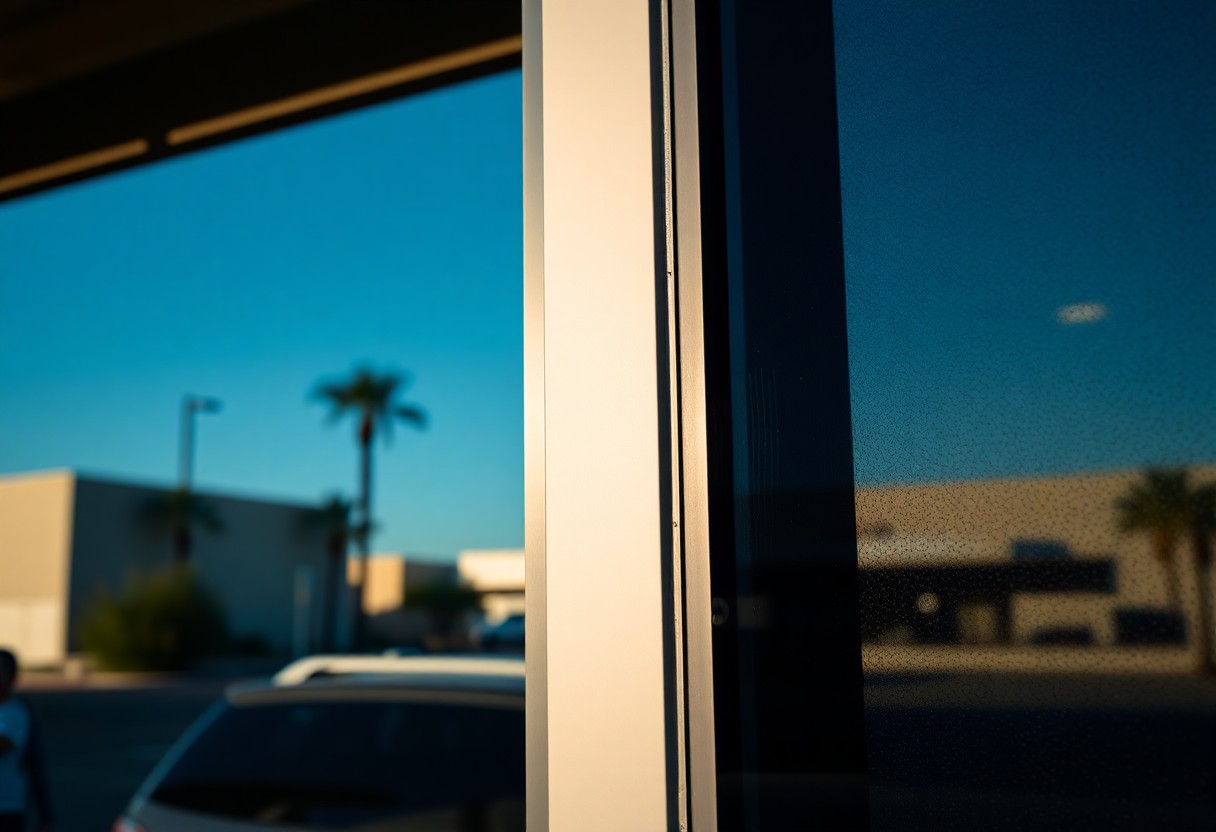Casa Grande offers a unique environment for homeowners and business owners looking to enhance their spaces. You may be considering the benefits of smart films versus traditional window tinting to improve energy efficiency, privacy, and aesthetic appeal. In this post, we will explore the features and advantages of both options, helping you make an informed decision that best suits your needs. Discover what each option brings to the table and how they can impact your property in Casa Grande.
The Science of Light Control: Smart Films Explained
Smart films represent the cutting edge of window technology, combining functionality and aesthetics to maximize your living or working space. These advanced materials can intelligently modulate the amount of light and heat entering your home or business, effectively creating a comfortable indoor environment. With adjustable opacity settings, they allow you to switch between transparent and opaque states, tailoring light visibility based on your needs and preferences.
How Smart Films Function
Smart films utilize a unique electrochromic technology that responds to an electrical current, changing their tint levels automatically or manually. When voltage is applied, tiny nanocrystals within the film rearrange, allowing for seamless transitions from clear to tinted states. As a result, you can control glare and enhance privacy on demand, offering a level of versatility traditional window tinting fails to provide.
Energy Efficiency and Cost Savings
Implementing smart films can lead to significant reductions in energy usage, translating into lower utility bills. By blocking out harmful UV rays and managing solar heat gain effectively, these films help maintain a consistent indoor temperature. This not only promotes comfort but also reduces wear and tear on your HVAC systems, extending their lifespan and decreasing maintenance costs.
Consider a study that found buildings with smart films could cut energy consumption by as much as 30%. By using less energy for heating and cooling, you can experience savings that accumulate year after year. Over the lifespan of smart films, these savings can significantly offset the initial installation costs, making them a smart investment for Casa Grande homes and businesses. Additionally, many energy-efficient financing options are available, further enhancing their affordability. Transitioning to smart films not only aligns with environmental goals but also contributes to your bottom line.
The Mechanics of Window Tinting: Traditional Methods
Traditional window tinting employs a variety of materials and techniques to reduce glare, enhance privacy, and improve energy efficiency. This method typically involves applying a thin, adhesive film to the interior surface of windows, providing a barrier against harmful UV rays and heat. The films can vary in thickness and material, offering different levels of performance and customization, which can make a significant difference in your home or business comfort and energy costs.
Types of Traditional Window Tinting
- Dyed Window Film: Offers basic heat and glare reduction.
- Metalized Window Film: Reflects heat and enhances durability.
- Carbon Window Film: Provides excellent heat rejection without a shiny appearance.
- Ceramic Window Film: Features high clarity and superior heat rejection.
- Safety & Security Film: Helps protect against breakage and intrusion.
Knowing the type of film you choose can directly impact your window’s performance and longevity.
Performance and Longevity Comparisons
| Type of Film | Performance & Longevity |
|---|---|
| Dyed Film | Reduced lifespan, basic heat reduction |
| Metalized Film | Increased durability, better heat rejection |
| Carbon Film | Durable with no fading over time |
| Ceramic Film | Long-lasting, high clarity heat rejection |
| Safety & Security Film | Enhances resilience, excellent for protection |
Understanding the performance and longevity of different traditional window films can guide your decision-making. Dyed films may enhance aesthetics but often do not last long and provide limited heat reduction, while more advanced options like ceramic and carbon films offer greater durability and superior energy-saving benefits. Choosing wisely based on your specific needs is important for maximizing your investment.
Further Insights on Performance and Longevity Comparisons
| Criteria | Impact on Choice |
|---|---|
| Durability | Longer-lasting films often justify higher upfront costs. |
| Heat Rejection | Significantly affects interior temperature and comfort. |
| UV Protection | Reduces fading of furnishings and flooring over time. |
| Visual Clarity | Affects external aesthetics and natural light entry. |
| Maintenance | More resilient films require less frequent replacement. |
Evaluating these performance criteria empowers you to select a window tinting solution that meets your style, budget, and functional needs. Each type presents its unique set of advantages, impacting both the short-term results and long-term enjoyment of your tinted windows.
Aesthetic Appeal: Choosing Between Look and Function
Balancing aesthetics and functionality in your Casa Grande property can be challenging. Smart films and traditional window tints each come with distinct advantages, allowing you to enhance the appearance of your home or business while serving practical purposes. Your choice will depend on whether you prioritize a modern, sleek look or a classic, timeless design. The right option not only improves energy efficiency and privacy but also affects how your property is perceived by visitors and potential customers.
Visual Impact and Curb Appeal
The visual impact of your windows plays a significant role in overall curb appeal. Smart films offer a contemporary, seamless finish that can modernize the look of your property. In contrast, traditional window tinting often results in a more uniform, classic appearance. Both options can enhance your property’s aesthetic, but your decision may hinge on the architectural style and the impression you want to convey to passersby.
Customization Options
Customization options are abundant with both smart films and traditional window tinting, allowing you to personalize the look of your windows. Smart films provide varying levels of opacity and light filtration, letting you select how much light and heat you want to let into your space. Traditional window tints come in a range of shades and colors, giving you the opportunity to match your existing decor and design aesthetic. This flexibility ensures you can achieve a unique look regardless of which option you choose.
Delving deeper, customization with smart films includes the ability to choose dynamic features, such as adjustable tinting levels that can be altered depending on the time of day or your preferences. Some smart films even allow integration with smart home systems for automated light control, creating a futuristic experience. Traditional window tinting typically offers less flexibility but can cater to an array of color choices and film types, allowing for specific finishes like glossy or matte. Whether you lean toward the innovation of smart films or the classic appeal of traditional tints, you can find a style that complements your Casa Grande property beautifully.

The Installation Experience: Smart Films vs. Tints
Understanding the installation experience can significantly influence your choice between smart films and traditional window tints. Each option presents unique characteristics that can affect not only the appearance of your windows but also the time and cost involved in applying them. The intricacies of installation vary, making it vital to weigh your preferences against the methods used for application, removal, and potential aftercare.
Time and Complexity of Installation
Smart films typically require specialized tools and techniques for proper installation, which can extend the time frame to complete the project. In contrast, traditional window tinting usually follows a more straightforward process and may be done more quickly, especially by a seasoned professional. However, if you opt for smart film, the initial time investment may yield substantial benefits in versatility and performance.
Maintenance and Durability Over Time
Both smart films and traditional tints boast longevity, yet their maintenance requirements and durability can differ. Smart films are designed to withstand daily wear and tear while maintaining transparency and responsiveness. Traditional tints, while durable, might fade or discolor over years due to sun exposure and environmental factors, necessitating replacement sooner than you might expect.
Durability in smart films is enhanced by advanced production methods, allowing for better resistance to scratches and impacts. Many smart films also feature self-healing properties, meaning minor scratches may disappear over time. On the other hand, while traditional tints can last several years, exposure to extreme weather can lead to peeling or bubbling. Research suggests that smart films can comfortably outlast many basic tint options, keeping your windows functional and visually appealing for a longer period without significant maintenance costs. Choosing the right option means considering your lifestyle, building type, and preference for long-term investments versus initial expenditures.
The Financial Consideration: Cost Analysis for Casa Grande
Assessing the financial implications associated with smart films and traditional window tinting is important for homeowners and business owners in Casa Grande. Initial costs, potential savings, and long-term benefits can vary significantly, and understanding these differences can help you make a more informed decision. While smart films often come with a higher upfront price, their energy efficiency and durability can offer considerable savings over time, whereas traditional tints may be more budget-friendly initially but could lead to higher energy bills and maintenance costs down the line.
Initial Investment vs. Long-term Savings
Smart films typically require a larger initial investment compared to traditional window tinting. However, the energy savings they provide can offset those costs within a few years. For example, smart films can reduce energy bills by up to 30%, leading to hundreds of dollars saved annually, which can quickly balance the higher upfront price tag.
Resale Value Impact on Properties
Investing in window solutions like smart films can positively influence your property’s resale value. Potential buyers are often drawn to homes with advanced technologies that enhance energy efficiency and modern aesthetics. In markets like Casa Grande, properties featuring smart films often command higher prices and sell faster, making your investment pay off in more ways than one.
Properties equipped with smart films can stand out in a competitive real estate market. By elevating your home’s energy efficiency and providing a high-tech feature, you increase its appeal to eco-conscious buyers. Data shows that homes with energy-efficient upgrades sell for a premium, often exceeding 5% of the average market value. This kind of upgrade not only puts money back in your pocket through energy savings but can substantially lift your overall investment value long-term.
To wrap up
Considering all points, choosing between smart films and traditional window tinting for your Casa Grande home or business ultimately depends on your specific needs and preferences. Smart films offer advanced functionality and versatility, allowing for control over light and privacy at your fingertips. In contrast, traditional window tinting provides a straightforward, cost-effective solution for UV protection and glare reduction. Evaluate your priorities—whether it be technology, aesthetics, or budget—to make an informed decision that enhances the comfort and efficiency of your space.





